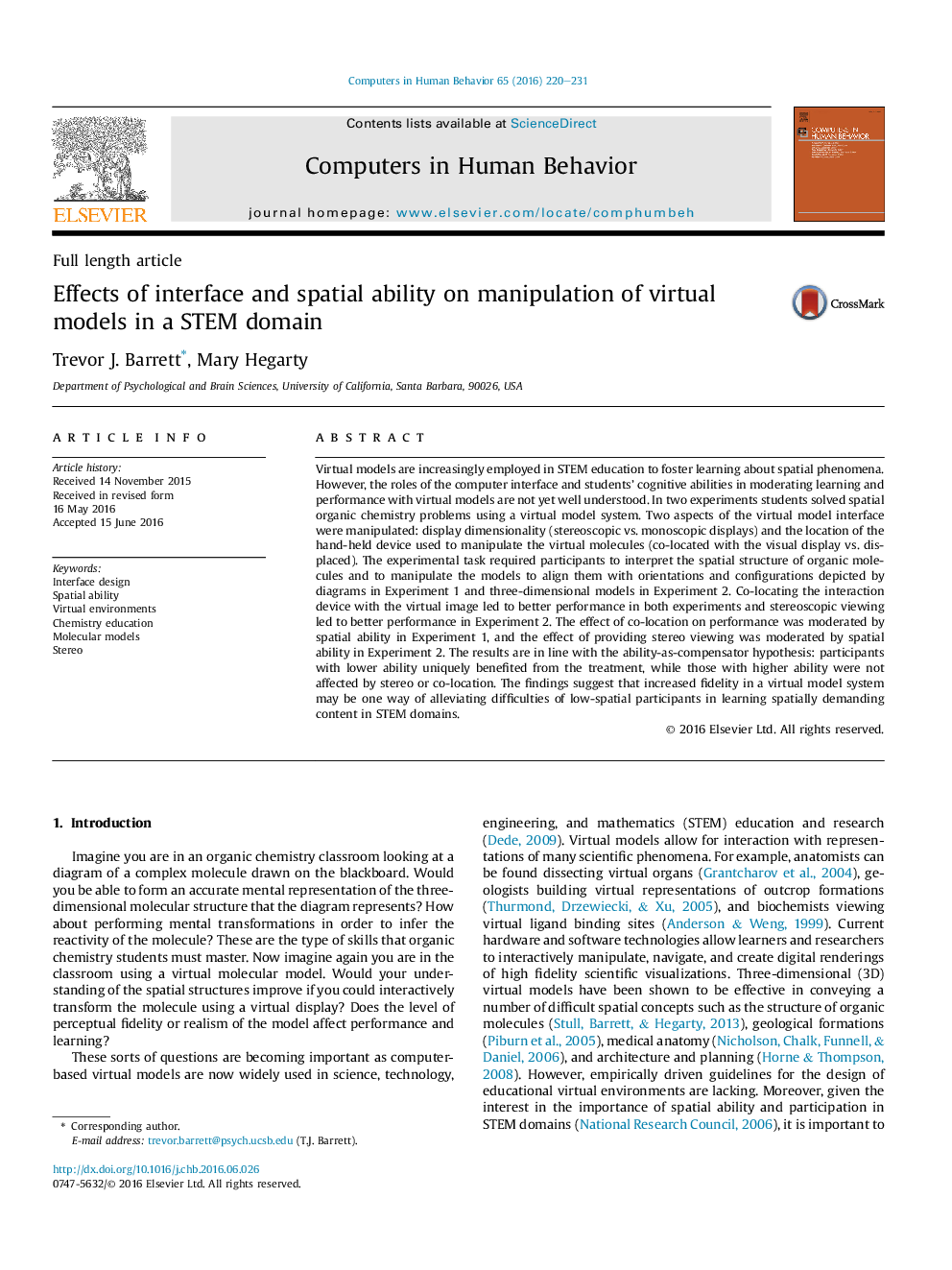| Article ID | Journal | Published Year | Pages | File Type |
|---|---|---|---|---|
| 4937789 | Computers in Human Behavior | 2016 | 12 Pages |
Abstract
Virtual models are increasingly employed in STEM education to foster learning about spatial phenomena. However, the roles of the computer interface and students' cognitive abilities in moderating learning and performance with virtual models are not yet well understood. In two experiments students solved spatial organic chemistry problems using a virtual model system. Two aspects of the virtual model interface were manipulated: display dimensionality (stereoscopic vs. monoscopic displays) and the location of the hand-held device used to manipulate the virtual molecules (co-located with the visual display vs. displaced). The experimental task required participants to interpret the spatial structure of organic molecules and to manipulate the models to align them with orientations and configurations depicted by diagrams in Experiment 1 and three-dimensional models in Experiment 2. Co-locating the interaction device with the virtual image led to better performance in both experiments and stereoscopic viewing led to better performance in Experiment 2. The effect of co-location on performance was moderated by spatial ability in Experiment 1, and the effect of providing stereo viewing was moderated by spatial ability in Experiment 2. The results are in line with the ability-as-compensator hypothesis: participants with lower ability uniquely benefited from the treatment, while those with higher ability were not affected by stereo or co-location. The findings suggest that increased fidelity in a virtual model system may be one way of alleviating difficulties of low-spatial participants in learning spatially demanding content in STEM domains.
Keywords
Related Topics
Physical Sciences and Engineering
Computer Science
Computer Science Applications
Authors
Trevor J. Barrett, Mary Hegarty,
